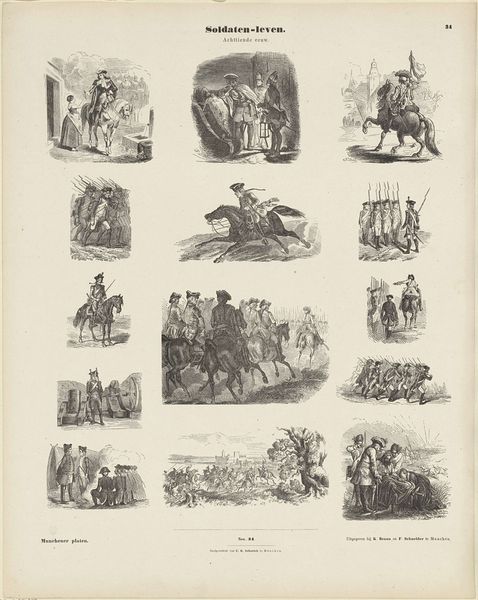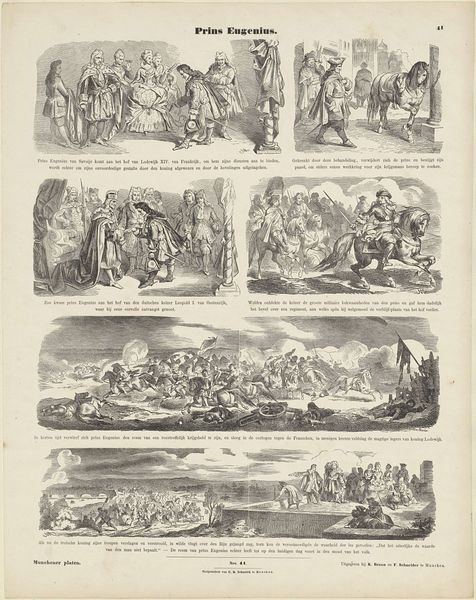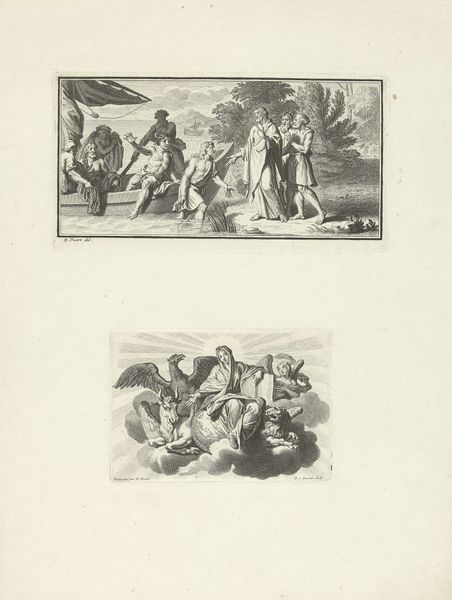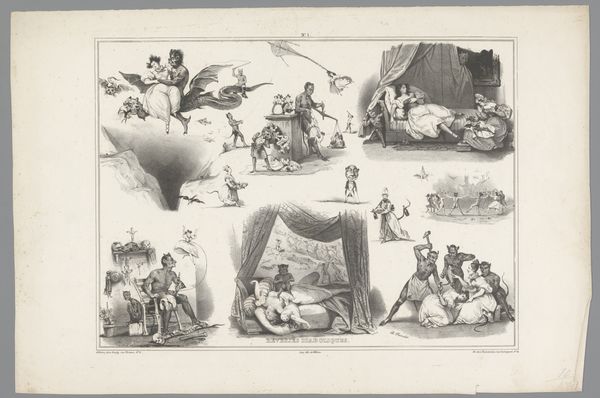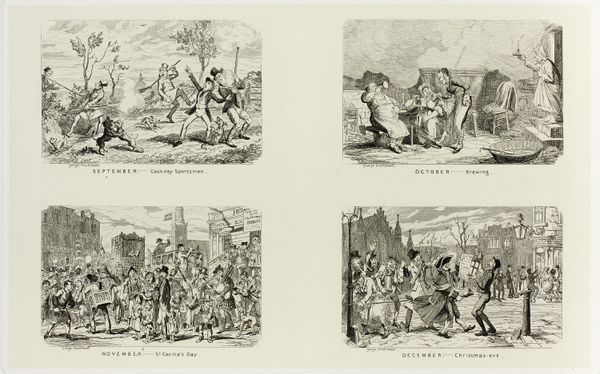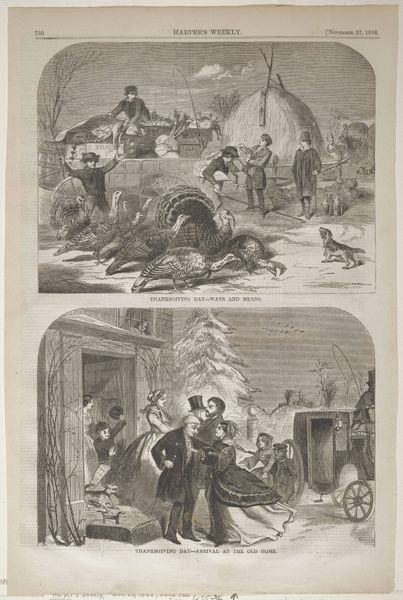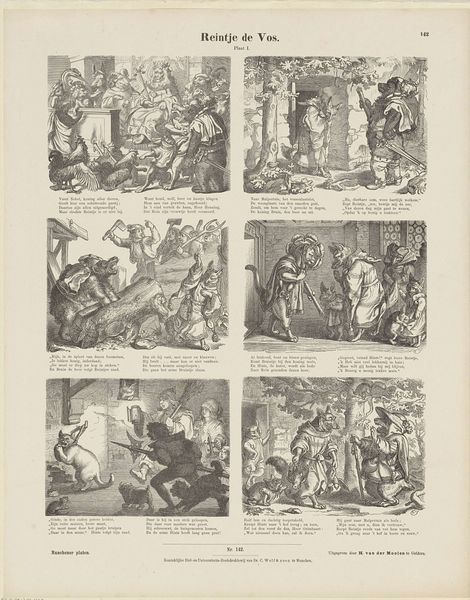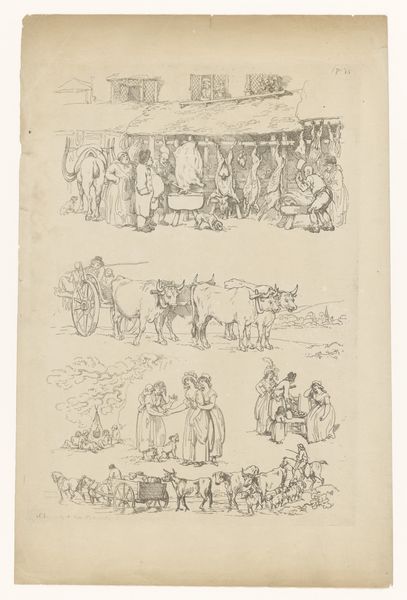
print, etching
# print
#
etching
#
caricature
#
figuration
#
genre-painting
Dimensions: height 444 mm, width 350 mm
Copyright: Rijks Museum: Open Domain
Curator: Allow me to introduce "Een zoologische tuin," or "A Zoological Garden," an etching by F. Barth, dating approximately from 1843 to 1920. Editor: This etching strikes me immediately as both satirical and absurd. There's a frenetic energy conveyed through the dense cross-hatching and caricature-like figures. It has a somewhat dark humor to it. Curator: Precisely. Note the composition; the artist divides the work into three distinct registers, each offering a vignette of anthropomorphic animals engaging in human activities. The upper register, for example, showcases what appears to be a grotesque feast or social gathering. It masterfully uses contrasting tones, light and shadow to define forms and create depth, but what is the means of production? I am deeply fascinated with how they produced those fine detailed textures on the plates. Editor: From a materialist perspective, the etching process is vital here. The labor intensive creation of these plates—the physical act of incising the design, the inking, the repeated pressure of the press to create each print. This suggests the creation and dissemination of an easily reproducible image. Curator: Indeed, such prints were integral to 19th-century visual culture, offering narratives accessible across socioeconomic boundaries. Consider how the lack of color further contributes to its narrative, forcing the eye to consider line and form alone. There's a starkness that enhances the feeling of critique, even a certain level of class disparity in how they interact. Editor: Absolutely. The contrast within the registers underscores this point—the supposed 'zoo' isn't simply a collection of animals acting like humans, it is commentary on their labor relations. I note the recurring motifs: the bestial figures eating, drinking, and interacting in what are clearly social activities. These suggest both leisure and potentially, exploitation of others. Curator: And, structurally, note how the bottom register depicts utter chaos; this provides visual counterpoint to the seemingly structured order of the scenes above. Perhaps a critique of societal decorum collapsing under base desires. What are your final thoughts on it, in closing? Editor: Ultimately, "A Zoological Garden," forces a deep connection with the materiality of artistic creation and invites viewers to question labor's inherent structures in any given artistic process. I keep pondering about the social layers within the artwork's narrative and method. Curator: It's an astute etching that serves as more than simple visual rendering. This artwork reminds me of the depth embedded within artistic choices, even in satire, and invites repeated viewing for complete unraveling of meaning.
Comments
No comments
Be the first to comment and join the conversation on the ultimate creative platform.


